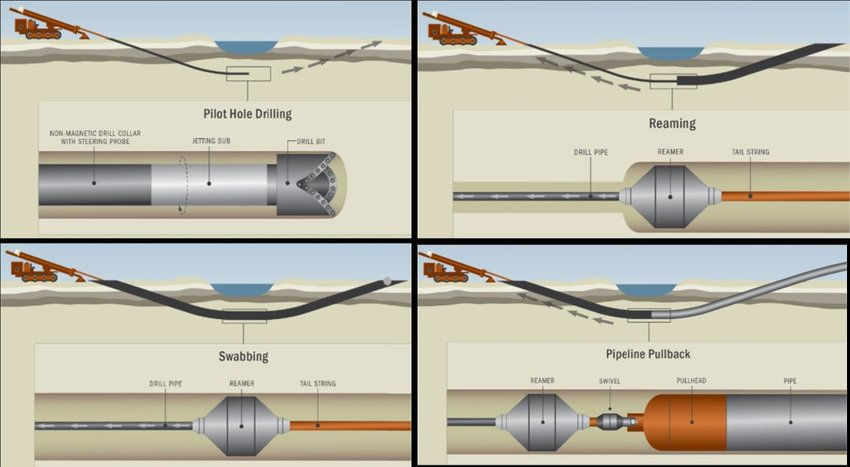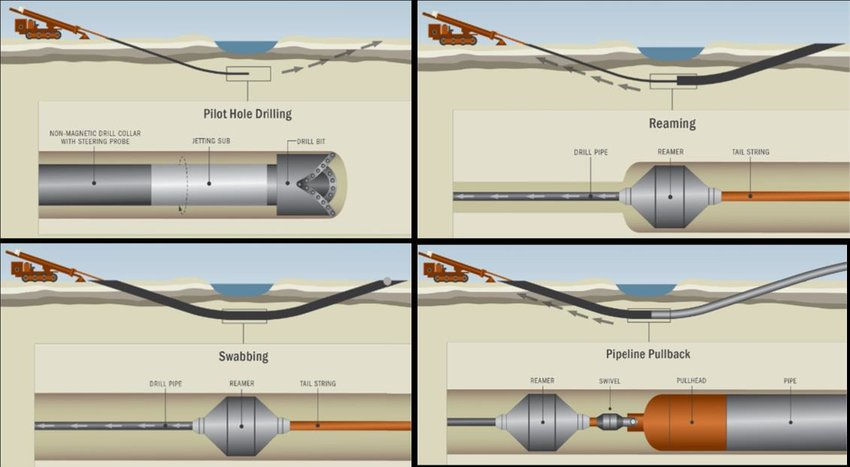How Does Horizontal Directional Drilling (HDD) Minimize Disruption to Traffic and Infrastructure?
- Grid Tech
- Jan 4, 2024
- 4 min read
In an era of rapidly expanding urban landscapes and a constant need to upgrade existing infrastructure, the construction industry faces a daunting challenge: how to minimize disruption to traffic and existing structures during vital projects. This is where Horizontal Directional Drilling (HDD) emerges as a game-changer. HDD is a trenchless technology that not only simplifies underground utility installations but also significantly reduces the inconveniences caused to communities and commuters.
So, here, today, in this blog post, we will delve into the innovative world of horizontal directional drilling and explore how it contributes to minimizing disruption to traffic and existing infrastructure.

How Does Horizontal Directional Drilling Contribute to Reducing Disruption?
Trenchless Technology Revolution:
Horizontal Directional Drilling, commonly known as HDD, represents a groundbreaking shift in the construction industry. Departing from the conventional method of trench excavation, HDD pioneers a trenchless approach, drilling horizontally below the surface. This innovative technology has redefined construction practices, offering a less invasive alternative. HDD's ability to minimize surface disruption, streamline operations, and safeguard existing infrastructure positions it as a transformative force. It allows construction to occur beneath the surface, preserving the integrity of roads, landscapes, and urban environments while still accomplishing vital projects, all contributing to a more sustainable and efficient construction landscape.
Precision and Accuracy:
HDD boasts unmatched precision and accuracy in its execution. Contractors meticulously plan and execute drilling operations, adeptly navigating around pre-existing utilities and structures. This precision guarantees minimal interference with existing infrastructure, significantly reducing the risk of accidental damage during construction. HDD's ability to target specific depths and directions ensures that every drilling endeavour is carried out with the utmost care and precision, offering a reliable solution that safeguards both the project's success and the integrity of the surroundings.

Minimal Surface Disruption:
HDD stands out for its capacity to eliminate extensive trenching, thereby mitigating surface disruption. Residents and commuters can carry on with their daily routines with little surface disturbance, as the bulk of the work transpires underground. This feature is especially advantageous in densely populated urban environments, where road closures and extensive excavation could lead to considerable inconvenience. By adopting Horizontal Directional Drilling , construction projects can minimize their visible footprint, contributing to smoother, more efficient, and less disruptive operations in crowded metropolitan areas.
Traffic Flow Uninterrupted:
Traditional construction methods often involve digging up roads, causing traffic snarls and delays. In stark contrast, HDD's non-disruptive methodology ensures the seamless flow of traffic. Roads and streets remain accessible for businesses and commuters, necessitating only minimal detours. This approach preserves the economic activity within the area, benefiting both residents and local enterprises. HDD's capacity to maintain uninterrupted traffic flow is instrumental in minimizing the inconvenience that construction activities can impose on communities.
Reduced Road Closure Time:
In instances where road closures become imperative, HDD drastically reduces closure durations. Unlike traditional construction techniques that might necessitate weeks or even months of road closures, HDD projects are often completed within a matter of days. This expedited turnaround time significantly mitigates the inconvenience suffered by commuters and businesses alike. The swiftness of HDD projects not only enhances overall efficiency but also underscores the technology's capability to minimize disruptions and maintain vital transportation arteries.

Preserving Landscapes:
HDD assumes a pivotal role in preserving the aesthetics of natural landscapes, parks, green spaces, and historical areas. Traditional excavation methods often result in unsightly scars on the land, requiring costly restoration efforts. HDD, on the other hand, ensures that these areas remain untouched, preserving their intrinsic beauty and historical significance. This ability to harmonize construction with the environment contributes to a more sustainable and aesthetically pleasing urban landscape, garnering appreciation from both communities and environmentalists.
Less Noise and Vibration:
The excessive noise and vibrations generated by construction activities, particularly those involving heavy machinery, can be highly disruptive to residents and nearby businesses. In stark contrast, HDD operations are notably quieter and produce minimal vibrations. This reduction in disturbance fosters a more harmonious coexistence with surrounding communities. It alleviates concerns about noise pollution and ensures that construction activities are less intrusive, making HDD a preferred choice in areas where maintaining peace and tranquillity is paramount.
Environmentally Friendly:
HDD stands out as an environmentally friendly option in the construction realm. With reduced emissions, minimal soil disturbance, and a decreased generation of waste, it aligns seamlessly with sustainability goals. Its reduced impact on ecosystems and water bodies positions it as the preferred choice for environmentally sensitive areas. HDD's commitment to minimizing its environmental footprint not only benefits the immediate surroundings but also contributes to the broader mission of preserving natural habitats and promoting responsible construction practices.

Cost-Efficient:
While HDD may necessitate a significant initial investment in equipment and expertise, it frequently proves cost-efficient in the long run. The reduction in surface repair, restoration, and traffic management costs often outweighs the initial expenditure. This makes HDD an economically sound choice for construction projects, delivering value through minimized disruptions, streamlined operations, and long-term cost savings. Its capacity to optimize resources and enhance efficiency underscores its position as a cost-effective solution for the construction industry.
Enhanced Public Perception:
Communities and municipalities highly appreciate the adoption of HDD due to its minimal disruption. Contractors and organizations that prioritize HDD demonstrate a commitment to community well-being. This proactive approach fosters an enhanced public perception and goodwill, as it showcases a genuine concern for the quality of life and convenience of residents. Such positive public sentiment not only benefits the immediate project but also establishes enduring trust between stakeholders and the communities they serve, which is invaluable in fostering collaborative, future endeavours.

Conclusion
In a world where construction and infrastructure development are essential but often cause significant disruptions, Horizontal Directional Drilling (HDD) stands as a beacon of innovation and progress. This trenchless technology offers precision, efficiency, and a host of environmental benefits that make it a preferred choice for minimizing disruptions to traffic and existing infrastructure.
By reducing surface disruption, preserving landscapes, and enabling swift project completion, HDD not only eases the burden on commuters but also fosters economic growth in urban and suburban areas. Its environmental sustainability, cost-efficiency, and positive public perception make it a valuable asset in the construction industry's toolbox.
As our cities continue to evolve and expand, HDD's role in minimizing disruption and preserving the quality of life for residents and businesses cannot be overstated. Embracing this technology is a step toward a more efficient, sustainable, and harmonious future.


Comments